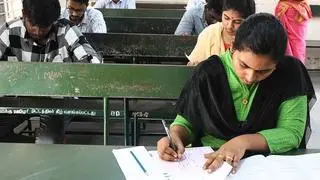What is the India Middle East Europe Economic Corridor?
The India Middle East Europe Economic Corridor (IMEC) is a transnational rail and shipping route spread across two continents, which the US says is expected to stimulate economic development through improved connectivity and economic integration between Asia, Arabian Gulf and Europe.
For the project, a MoU has been signed between Saudi Arabia, European Union, India, the UAE, France, Germany, Italy and the US.
The IMEC will include two separate corridors — the east corridor connecting India to the Arabian Gulf and the northern corridor connecting the Arabian Gulf to Europe.
It will include railway projects, which upon completion will provide a reliable and cost-effective cross-border ship-to-rail transit network to supplement existing maritime and road transport routes enabling goods and services to transit between India, the UAE, Saudi Arabia, Jordan, Israel, and Europe.
What is the objective behind this corridor?
The objectives for IMEC include generating economic growth while incentivising new investments in the region. It aims to connect the two continents (Asia and Europe) with commercial hubs and facilitate development and export of clean energy, support existing trade and manufacturing synergies and strengthen food security and supply chains.
The project will also help link energy grids and telecommunication lines through undersea cables to expand access to electricity, Internet, etc.
How would you compare IMEC with the Belt & Road Initiative (BRI)?
In terms of objectives, both the mega transnational projects are similar. However, China’s New Silk Route is larger in terms of scale. Announced in 2013, China has signed BRI cooperation documents with more than 150 countries and over 30 international organisations, galvanising nearly $1 trillion and creating over 3,000 projects. Even some of the IMEC MoU signatories are also part of BRI, such as Italy, Saudi Arabia and the UAE. Though Italy has now decided to pull out of it.
Though the IMEC policy documents do not talk about the Belt and Road Initiative or China, the project parallels BRI, which is a global trade and infrastructure plan based on the lines of the old Silk Road that linked China and the West.
Analysts say that China’s BRI is already a decade ahead of the IMEC, which is still not finalised. The finances should not be an issue, but a more concrete comparison could be made once the “real big deal”, as US President Joe Biden said, is finalised. The MoU signing countries are expected to meet in two months to firm up details.
Having said that, BRI has its own share of issues such as allegations of it being a “debt trap” for developing countries. For instance, Sri Lanka, which joined BRI, last year declared that it is unable to meet its debt obligations marking the worst economic crisis in the island country in the last several decades.
As recently as last week, Italian Prime Minister Giorgia Meloni communicated to Chinese Premier Li Qiang its intentions to pull out of the BRI on the side-lines of the G20 Leadership Summit in New Delhi.
To what extent will the IMEC help India’s external trade?
According to a White House release, the IMEC is expected to increase efficiencies, reduce costs, enhance economic unity, generate jobs, and lower greenhouse gas emissions.
The cross-border shipping and railways corridor will reduce logistics costs as well as boost trade in goods and services between the UAE, Saudi Arabia, India and Europe. For instance, the destination for India’s engineering exports are primarily the Middle East and Europe. These exports will get a fillip.
Similarly, this offers India the opportunity to create green hydrogen and green ammonia hubs near the coasts and supply the commodities via shipping and rail network to the Middle East and eventually Europe. Analysts project that the corridor will make India’s export deliverables more efficient and cost-effective thereby adding to their competitiveness.
What will be the challenges in implementing this?
The first and foremost challenge is to create a firm plan to establish the corridor. At present, there are no financial commitments, which will be decided in about two months.
Laying a network of railway lines, roads and port connectivity across countries requires a high-level of coordination and planning. Besides, the corridor also passes through Jordan and Israel, which throws up geopolitical challenges, which would require a fine balance of economic and diplomatic manoeuvring.
The BRI, which is in its 10th year, has faced several challenges related with coordinating with countries, financial packages, geopolitics, diplomatic considerations, etc. The IMEC will also have its share of similar challenges.
Furthermore, apart from Italy, Saudi Arabia and the UAE are also part of the BRI. It would be worth watching how a balance is struck between the two commitments.








Comments
Comments have to be in English, and in full sentences. They cannot be abusive or personal. Please abide by our community guidelines for posting your comments.
We have migrated to a new commenting platform. If you are already a registered user of TheHindu Businessline and logged in, you may continue to engage with our articles. If you do not have an account please register and login to post comments. Users can access their older comments by logging into their accounts on Vuukle.